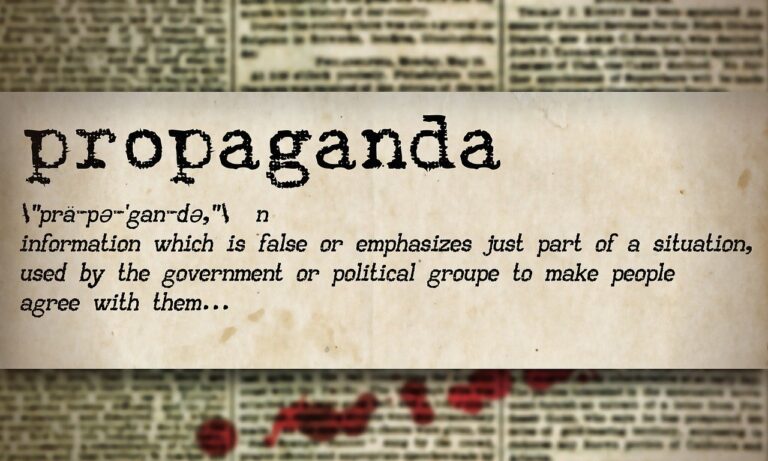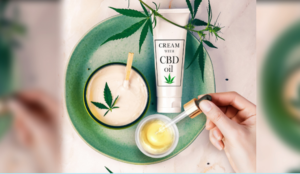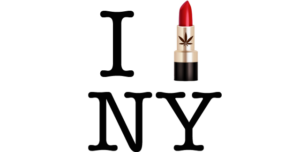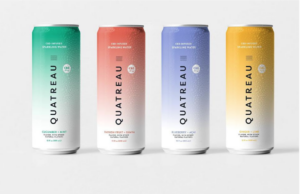EDUCATION
How Did Cannabis Become Illegal In The First Place?
Cannabis was at one point freely cultivated and used in the U.S.
What happened?
Here we take a look at the history of marijuana law in America.
by Kim Nunley
After decades of cannabis prohibition in the United States, it may be hard to imagine that for the majority of the nation’s history, cannabis was widely accepted and used for medicinal purposes.
Up until the twentieth century, cannabis was freely cultivated and used to produce medications, rope, and textiles.
So what happened? Why did marijuana become illegal and criminalized?
Most people assume that cannabis was made illegal through a process involving scientific, medical, and government hearings that concluded prohibition was best to protect citizens. The reality, however, is a different story.In the midst of these changing social attitudes and state laws, it’s worth looking into what brought about American marijuana prohibition in the first place.
Early American History: Hemp and Marijuana as Top Commodities
Cannabis, thought to be among the first-ever domesticated crops, has a long history in America. The cultivation and production of marijuana and hemp was encouraged throughout the early colonies, before they were formally the United States.
In 1619, King James I announced The Virginia Company decree, which ordered every colonist to cultivate 100 help plants for export to England¹. Hemp was even exchanged as legal tender in Pennsylvania, Virginia, and Maryland.
Domestic cannabis production continued to flourish up through the Civil War, when it was used to produce rope and fabric. Also during this time, hemp and marijuana were embraced for their medicinal properties:
“By the late 18th century, early editions of American medical journals recommend hemp seeds and roots for the treatment of inflamed skin, incontinence and venereal disease,” write Patrick Stack and Claire Suddath of TIME Magazine.
“Irish doctor William O’Shaughnessy first popularized marijuana’s medical use in England and America… He found marijuana eased the pain of rheumatism and was helpful against discomfort and nausea in cases of rabies, cholera, and tetanus⁸.”
Studies demonstrating cannabis as holding therapeutic potential continued into the 19th century. French doctor and scientist Jacques-Joseph Moreau’s discovered that marijuana was effective at suppressing headaches, increasing appetite, and supporting sleep, and his findings were published in journals like the American Journal of Psychiatry⁹.
How Did Cannabis Become Illegal?
In the 1850s, marijuana was medically prepared and made available through public American pharmacies³. It was listed in the United States Dispensatory, an official authority for prescription and over the counter medicines, as a treatment for conditions like improving appetite, sexual interest, mental disorders, gout, cholera, hydrophobia, and insomnia⁶. In the nineteenth and early twentieth centuries, cannabis in liquid form and as hashish was freely available to purchase at drug stores.
President Franklin D. Roosevelt, who encouraged the adoption of cannabis restrictions, supported Anslinger’s argument. Despite being opposed by the American Medical Association who argued in support of the therapeutic benefits of marijuana, Congress passed the Marijuana Tax Act in 1937. The act called for a tax equaling roughly one dollar on anyone who dealt commercially in cannabis while implementing penalties and enforcement provisions to cannabis handlers⁷.
Some historians believe that the efforts to pass the Marijuana Tax Act of 1937 were spearheaded by Hearst, Andrew Mellon, and the DuPont family, who saw the hemp industry as a monetary threat⁶.
According to authors and historians Laurence French and Magdaleno Manzanárez, hemp – a sustainable and versatile crop with over 24,000 product applications — was becoming a cheaper substitute for wood pulp used to print newspapers, and Hearst and the others who had lumber and paper holdings were looking to destroy the competition⁶.
Hearst launched an aggressive crusade against marijuana through his newspapers and magazines, which regularly published sensational stories about the threat of marijuana and the life-threatening plight of those who used the drug².
How Did Cannabis Become Illegal?
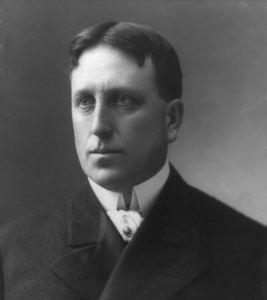
Early 1900’s: The Unreasonable Attack on Cannabis
Attitudes regarding marijuana started to shift in the early 1900’s following the Mexican Revolution, as the subsequent hefty influx of Mexican immigrants into the U.S.. Mexican immigrants came to Texas and Louisiana and brought with them their cultural tradition of smoking marijuana leaf in cigarettes and pipes for medicinal purposes2.
Americans at the time were only abreast with cannabis in the form of oil or hashish, which they took orally². Plus, Mexicans called their cannabis “marihuana,” a term unfamiliar to Americans¹.
Unhappy with the inbound flow of immigrants, the U.S. media, including newspaper mogul William Randolph Hearst, began to falsely spread claims that Mexican immigrants were being disruptive, behaviors they attributed to their ‘marihuana’ use¹. Cannabis began to be vilified.
There were congressional hearings regarding marijuana law in the 1930s, with some lawmakers looking to control Mexican immigration deceitfully by falsely claiming that marijuana would cause men of color to be violent against white women. The head of the Federal Bureau of Narcotics (FBN), Harry J. Anslinger, argued that the exposure to marijuana was causing an increase in marijuana smoking among reports of middle-class people.
How Did Cannabis Become Illegal?
The 1950’s through the 1970’s: A Journey to Full Prohibition
Following America’s entry into World War II, cannabis production was ignited in the US once again. Imports of hemp that were needed to produce parachutes, marine cordage, and other military necessities had become scarce, so the Department of Agriculture distributed seeds and encouraged American farmers to plant hemp in its “Hemp for Victory” campaign³.
But fears of cannabis returned in the mid 1960s when reports found that marijuana use was up in youth and college students. The media and news outlets pushed the so-called campus drug epidemic².
Richard Nixon, during his 1968 presidential campaign, promised to restore “law and order” to America. Upon being elected, he declared a War Against Drug Abuse². Under Nixon’s presidency, the federal government passed the 1970 Controlled Substances Act, which classified drugs on four different schedules. The federal act classified cannabis as a Schedule 1 drug, causing it to be considered one of the most dangerous substances that carry the highest penalty.
The Controlled Substances Act unfortunately lumped all cannabis together, failing to recognize the differences between marijuana and hemp. The act, which makes cannabis illegal under federal law, is still in place today.
Just How Did Cannabis Become Illegal?
The 1990s: Cannabis Returns for Medicinal Purposes
The 1990s were monumental for cannabis policy in the U.S., thanks to the efforts of marijuana researchers.
Early in this decade researchers made notable breakthroughs, expanding our current understanding on cannabis. Specifically, they learned how the compounds inside cannabis, cannabinoids, interact with a part of our body called the endocannabinoid system, a complex signaling network that is responsible for performing different tasks in an effort to maintain homeostasis.
Scientists also were able to identify the endocannabinoid system’s main cannabinoid receptors, CB₁ and CB₂, present in the nervous system and immune system10. When stimulated, these cannabinoid receptors trigger a variety of physiological processes by altering the release of neurotransmitters in an effort to keep systems in balance. These beneficial effects include, but are not restricted to, controlling inflammation, limiting cell damage, and reducing pain11.
With these scientific breakthroughs came greater support to make cannabis accessible for those in medical need. While cannabis remained federally illegal under the Controlled Substances Act, in 1996 California became the first state to establish medical marijuana legislation, offering a legal cannabis option for the first time in decades.
Arizona followed with its own medical marijuana legislation later that year. Before the decade finished, Alaska, Oregon, Washington, and Maine had each passed laws permitting the use of marijuana for medical purposes.
The 2000s to Today: Cannabis’ Gradual Acceptance
Since the first statewide medical marijuana laws went into effect, the number of states adopting cannabis legislation has been steadily growing.
Support for marijuana legalization in the U.S. among voters is now at an all-time high, with a recent poll finding that 60 percent believe adult use marijuana should be legalized and 93 percent support the legalization of medical marijuana.
The growing social acceptance of marijuana and the greater recognition of its medical purposes has made an impact on cannabis policy throughout the U.S. The 2016 election was monumental for cannabis, as voters in eight states approved marijuana measures.
As of today, 33 states and Washington D.C. have passed laws legalizing the use of medical marijuana.
Eleven states, including Colorado, Oregon, Washington, Alaska, California, Massachusetts, Nevada, Maine, Illinois, as well as Washington D.C., have taken the extra step to legalize recreational marijuana.
Additionally, a large majority of states have passed laws allowing for the cultivation of hemp. A provision within the 2014 federal Farm Bill gave permission for states to adopt statutes permitting universities and state departments of agriculture to grow hemp. The new law spurred hemp cultivation throughout the U.S., and more than 23,000 acres of hemp were grown in the U.S. in 2017, with Colorado leading the way in production. In 2018, hemp and hemp-derived products like CBD oil became legal for commercial production with the passage of the 2018 Farm Bill.
Learn More about Marijuana
Today, more Americans understand and respect cannabis to naturally promote wellness thanks to recent groundbreaking discoveries by researchers. Read up what studies have found on cannabis’ potential benefits.
Because of changing public perceptions and grassroots efforts toward recreational and medical legalization, it looks like cannabis law in 2019 and beyond will continue to progress toward the end of federal prohibition.
How Did Cannabis Become Illegal?
References:
- How Did Marijuana Become Illegal in the First Place? (2014, October 9). Drug Policy Alliance. Retrieved from http://www.drugpolicy.org/blog/how-did-marijuana-become-illegal-first-place.
- The Illegalization of Marijuana: A Brief History. (2014, May). Origins: Current Event in Historical Perspective, The Ohio State University. Retrieved from http://origins.osu.edu/article/illegalization-marijuana-brief-history.
- Marijuana Timeline. (n.d.). PBS Frontline. Retrieved from http://www.pbs.org/wgbh/pages/frontline/shows/dope/etc/cron.html.
- Milestones in U.S. Marijuana Laws. (2013, October 27). The New York Times. Retrieved from http://www.nytimes.com/interactive/2013/10/27/us/marijuana-legalization-timeline.html?_r=0#/#time283_8117.
- History of marijuana in America. (2015, September 2). CNN. Retrieved from http://www.cnn.com/2013/08/14/us/gallery/marijuana-history/.
- French, L., & Manzanárez, M. (2004). NAFTA & neocolonialism: Comparative criminal, human & social justice. Lanham, MD: University Press of America. Retrieved from https://books.google.com/books/about/NAFTA_Neocolonialism.html?id=4ozF1Yg-c4MC.
- Earleywine, M. (2002). Understanding marijuana: A new look at the scientific evidence. Oxford: Oxford University Press. Retrieved from https://books.google.com/books?id=r9wPbxMAG8cC&pg=PA24#v=onepage&q&f=false.
- A Brief History of Medicinal Marijuana. (2009, October 21). TIME Magazine. Retrieved from http://content.time.com/time/health/article/0,8599,1931247,00.html.
- Historical and cultural aspects of use of cannabis. (2015, November 27). Cannabis – Challenge for Modern Society, Lithuania 2015. Retrieved from http://www.cannabisconference.eu/wp-content/uploads/2016/01/Mari-J%C3%A4rvelaid.pdf.
- Pertwee, R. G. (2008). The diverse CB1 and CB2 receptor pharmacology of three plant cannabinoids: Δ9-tetrahydrocannabinol, cannabidiol and Δ9-tetrahydrocannabivarin. British Journal of Pharmacology, 153(2), 199–215. Retrieved from https://www.ncbi.nlm.nih.gov/pmc/articles/PMC2219532/.
- Introduction to the Endocannabinoid System. (n.d). NORML. Retrieved from http://norml.org/library/item/introduction-to-the-endocannabinoid-system.
HOW CBD WORKS
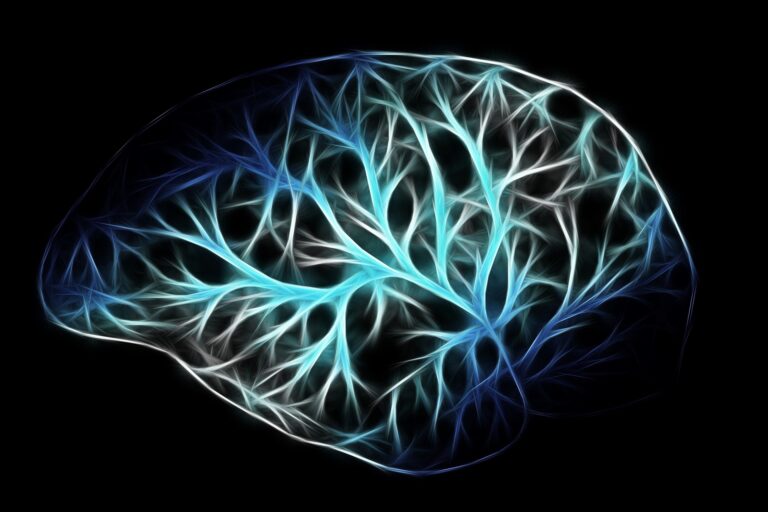
by Jon Johnson
All cannabinoids, including CBD, produce effects in the body by attaching to certain receptors.
The human body produces certain cannabinoids on its own. It also has two receptors for cannabinoids, called the CB1 receptors and CB2 receptors.
CB1 receptors are present throughout the body, but many are in the brain.
The CB1 receptors in the brain deal with coordination and movement, pain, emotions, and mood, thinking, appetite, and memories, and other functions.
THC attaches to these receptors.
CB2 receptors are more common in the immune system.
They affect inflammation and pain. Researchers once believed that CBD attached to these CB2 receptors, but it now appears that CBD does not attach directly to either receptor. Instead, it seems to direct the body to use more of its own cannabinoids.
People take or apply cannabidiol to treat a variety of symptoms, but its use is controversial. There is some confusion about what it is and how it affects the human body.
FIND OUT MORE | MEDICAL NEWS TODAY
WHAT IS MEDICAL MARIJUANA (CANNABIS)?

Harvard Health Blog / Posted Jan. 15, 2018, 10:30 AM
Peter Grinspoon, MD, Contributing Editor
There are few subjects that can stir up stronger emotions among doctors, scientists, researchers, policy makers, and the public than medical marijuana. Is it safe? Should it be legal? Decriminalized? Has its effectiveness been proven? What conditions is it useful for? Is it addictive? How do we keep it out of the hands of teenagers? Is it really the “wonder drug” that people claim it is? Is medical marijuana just a ploy to legalize marijuana in general?
These are just a few of the excellent questions around this subject, questions that I am going to studiously avoid so we can focus on two specific areas: why do patients find it useful, and how can they discuss it with their doctor?
Marijuana is currently legal, on the state level, in 29 states, and in Washington, DC. It is still illegal from the federal government’s perspective. The Obama administration did not make prosecuting medical marijuana even a minor priority. President Donald Trump promised not to interfere with people who use medical marijuana, though his administration is currently threatening to reverse this policy. About 85% of Americans support legalizing medical marijuana, and it is estimated that at least several million Americans currently use it.
Marijuana without the high
Least controversial is the extract from the hemp plant known as CBD (which stands for cannabidiol) because this component of marijuana has little, if any, intoxicating properties. Marijuana itself has more than 100 active components. THC (which stands for tetrahydrocannabinol) is the chemical that causes the “high” that goes along with marijuana consumption. CBD-dominant strains have little or no THC, so patients report very little if any alteration in consciousness.
Patients do, however, report many benefits of CBD, from relieving insomnia, anxiety, spasticity, and pain to treating potentially life-threatening conditions such as epilepsy. One particular form of childhood epilepsy called Dravet syndrome is almost impossible to control, but responds dramatically to a CBD-dominant strain of marijuana called Charlotte’s Web. The videos of this are dramatic.
Uses of medical marijuana
The most common use for medical marijuana in the United States is for pain control. While marijuana isn’t strong enough for severe pain (for example, post-surgical pain or a broken bone), it is quite effective for the chronic pain that plagues millions of Americans, especially as they age. Part of its allure is that it is clearly safer than opiates (it is impossible to overdose on and far less addictive) and it can take the place of NSAIDs such as Advil or Aleve, if people can’t take them due to problems with their kidneys or ulcers or GERD.
In particular, marijuana appears to ease the pain of multiple sclerosis, and nerve pain in general. This is an area where few other options exist, and those that do, such as Neurontin, Lyrica, or opiates are highly sedating. Patients claim that marijuana allows them to resume their previous activities without feeling completely out of it and disengaged.
Along these lines, marijuana is said to be a fantastic muscle relaxant, and people swear by its ability to lessen tremors in Parkinson’s disease. I have also heard of its use quite successfully for fibromyalgia, endometriosis, interstitial cystitis, and most other conditions where the final common pathway is chronic pain.
Marijuana is also used to manage nausea and weight loss, and can be used to treat glaucoma. A highly promising area of research is its use for PTSD in veterans who are returning from combat zones. Many veterans and their therapists report drastic improvement and clamor for more studies, and for a loosening of governmental restrictions on its study. Medical marijuana is also reported to help patients suffering from pain and wasting syndrome associated with HIV, as well as irritable bowel syndrome and Crohn’s disease.
This is not intended to be an inclusive list, but rather to give a brief survey of the types of conditions for which medical marijuana can provide relief. As with all remedies, claims of effectiveness should be critically evaluated and treated with caution.
Talking with your doctor
Many patients find themselves in the situation of wanting to learn more about medical marijuana, but feel embarrassed to bring this up with their doctor. This is in part because the medical community has been, as a whole, overly dismissive of this issue. Doctors are now playing catch-up, and trying to keep ahead of their patients’ knowledge on this issue. Other patients are already using medical marijuana, but don’t know how to tell their doctors about this for fear of being chided or criticized.
My advice for patients is to be entirely open and honest with your physicians and to have high expectations of them. Tell them that you consider this to be part of your care and that you expect them to be educated about it, and to be able to at least point you in the direction of the information you need.
My advice for doctors is that whether you are pro, neutral, or against medical marijuana, patients are embracing it, and although we don’t have rigorous studies and “gold standard” proof of the benefits and risks of medical marijuana, we need to learn about it, be open-minded, and above all, be non-judgmental. Otherwise, our patients will seek out other, less reliable sources of information; they will continue to use it, they just won’t tell us, and there will be that much less trust and strength in our doctor-patient relationship. I often hear complaints from other doctors that there isn’t adequate evidence to recommend medical marijuana, but there is even less scientific evidence for sticking our heads in the sand.

